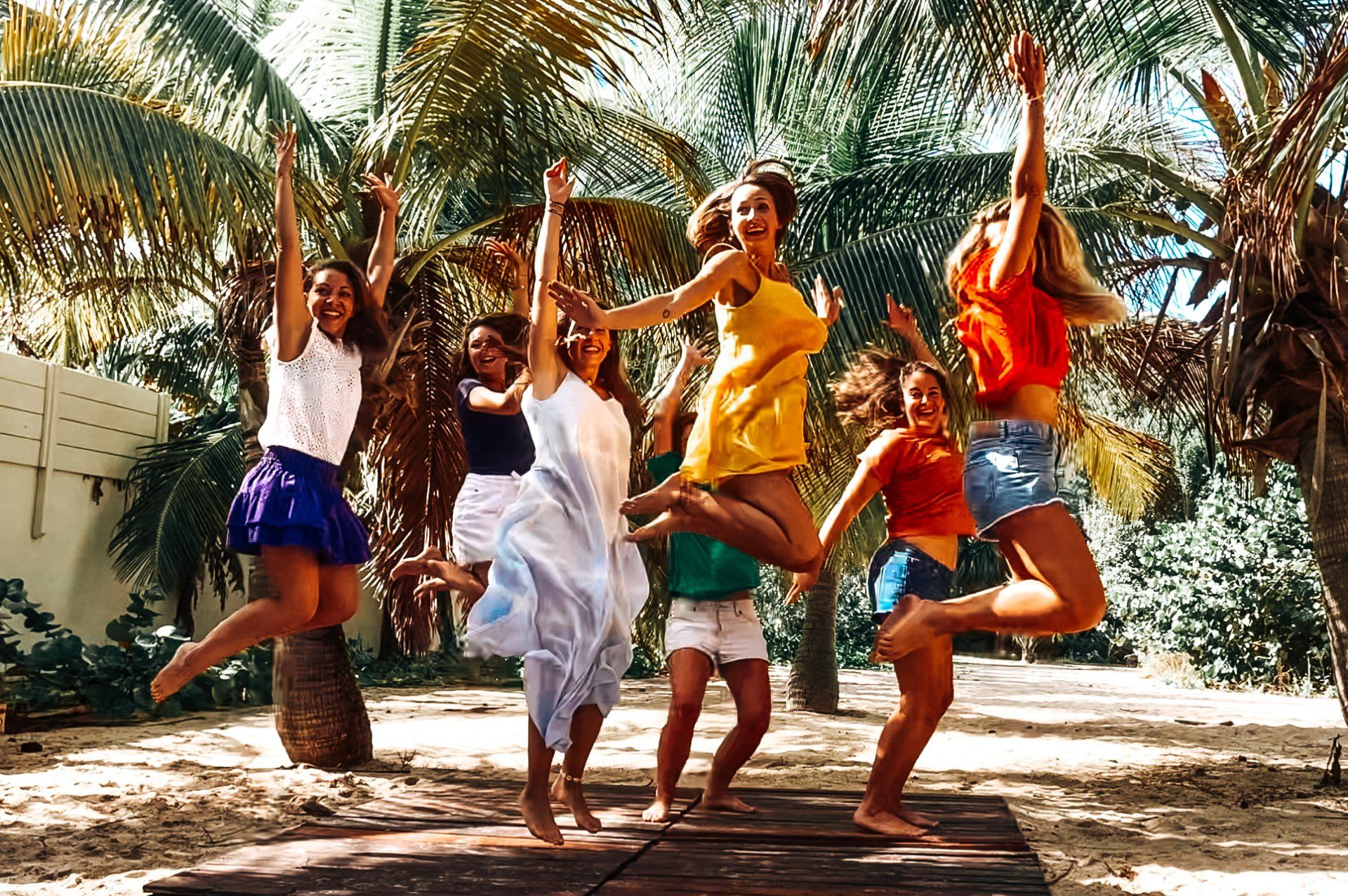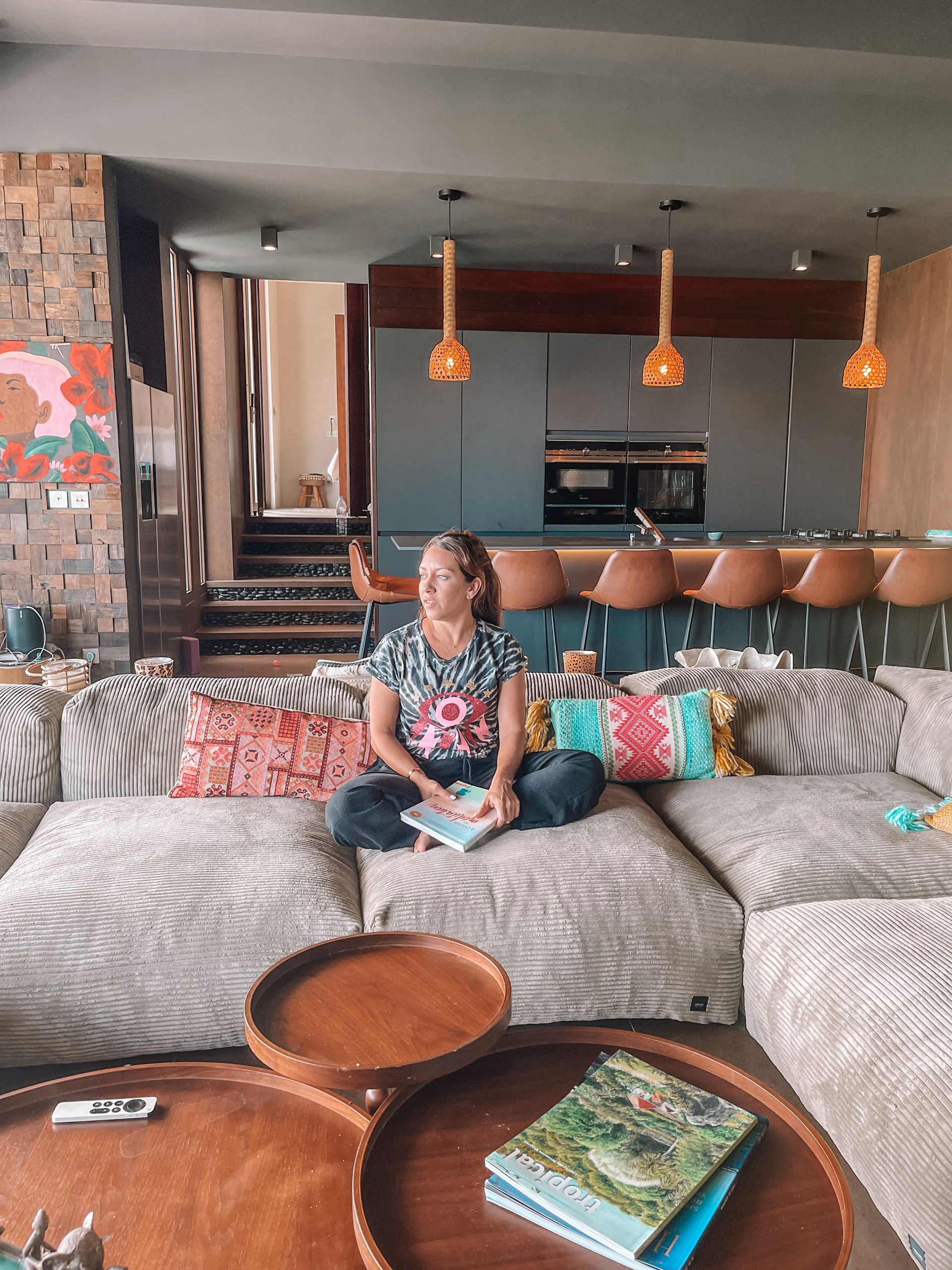The Principles of Yoga Teaching: An Ultra-Complete Guide to Becoming a Super Yoga Teacher 🧘♀️🧘♂️

1. Teaching Effectively: Secrets to Captivate and Inspire Your Students 💡
Communication: Speak Like a Yogi... But Clearer 💬
Communication is the key to becoming an unforgettable yoga teacher. You don’t want your students to feel lost like a fish out of water, do you?
- Simplicity and Precision: Think of your language like a yoga pose: simple, aligned, and effective. Avoid complicated jargon—save it for yoga teacher soirées. For example, instead of saying "Take Urdhva Hastasana with relaxed shoulders," say "Raise your arms above your head, shoulders relaxed." It’s as simple as that!
- Visualization and Metaphors: Images often speak louder than words. Ask your students to "stretch like a cat in the sun" for a forward bend pose. It helps them understand better and brings a smile (which is a plus in a challenging pose).
Classroom Management: Become the Maestro of Your Studio 🎶
Leading a yoga class is somewhat like conducting an orchestra: everything must be in harmony to create a smooth and inspiring experience.
- Organization and Structure: Start each class with a clear intention and a well-defined structure. Nothing disrupts a student more than a teacher who improvises at every moment. Discipline is cool, as long as you don’t turn your class into a bootcamp.
- Adaptability: Sense the energy of the room. Are your students looking tired? Lighten the sequence a bit. Are they full of energy? Add a few extra challenges. And remember: it’s always good to have a plan B... and C, and D. 😅
Knowledge of Poses: Be Your Students’ GPS 🧠
A good yoga teacher must know the poses like the back of their hand... or rather, like their own toes.
- Functional Anatomy: You don’t need to be a surgeon to teach yoga, but understanding how poses affect the body is crucial. For example, in the "Warrior II" (Virabhadrasana II) pose, guide your students on how to align their knee to protect the joint.
- Variations and Adjustments: Offering variations is like offering options at a buffet—there’s something for everyone! Not everyone has the flexibility of a contortionist, so provide accessible alternatives, such as using blocks or adjusting the range of movements.
2. Creating Class Sequences: Become the Conductor of Fluidity 🎨
Composing a yoga sequence is like writing a symphony: each note, or rather each pose, must flow harmoniously.
The Foundations of Alignment: Preparing the Body for a Safe Practice 🔧
Alignment is not just about physical posture; it’s the foundation of any yoga practice. Here’s how to ensure your students stay within their comfort zone... while stepping a bit out of it. 😉
- Body Preparation: Like building a house, start with the foundations. Poses like "Tadasana" (Mountain Pose) help establish a solid base. Before diving into more complex poses, guide your students to find their body alignment. For example, in a standing pose, emphasize grounding the feet and elongating the spine.
- Smooth Transitions: Transitions between poses should be as smooth as butter on a hot pan. For example, after a "Downward-Facing Dog," you can gently transition to a "Warrior I" by keeping the movement fluid and connected to the breath.
Progression and Safety: Building a Logical and Balanced Session 📈
Building a yoga session is like constructing a house: you need to start with the basics before adding sophisticated finishes.
- Warm-Up: Don’t start your class by throwing your students directly into a balancing pose like "Bakasana" (Crow Pose). Instead, opt for gentle warm-ups like Sun Salutations to prepare the muscles and joints.
- Peak of the Sequence: Choose a flagship pose, a culmination point of the session, where your students can apply everything they’ve learned so far. For a class focused on hip opening, "Ustrasana" (Camel Pose) could be the peak pose.
- Cool Down: Dessert is often eagerly awaited—and in yoga, it’s the same thing. End your class with relaxing poses and a well-deserved "Savasana" (Corpse Pose), allowing your students to savor the benefits of their practice.
Thematic and Intention: Giving Meaning to Each Session 🎭
Having an intention or theme for your yoga session is like putting the cherry on top. It transforms a good practice into a meaningful experience.
- Choosing the Theme: Select a theme that resonates with your students. For example, a class dedicated to "Gratitude" could incorporate heart-opening poses like "Ustrasana" (Camel) or "Bhujangasana" (Cobra). It’s also an opportunity to add some meditative reflections throughout the session.
- Integrating the Theme: Revisit your theme throughout the class with subtle touches. For instance, invite your students to reflect on a person or experience they are grateful for while holding a balancing pose. This adds a deeper and more personal dimension to the practice.
3. Building a Relationship with Your Students: Be More Than Just a Teacher, Be a Guide 💞
Creating an authentic relationship with your students is essential to becoming more than just a yoga teacher. It’s what will transform your classes into a true community.
Active Listening and Presence: The Art of Being Truly There 👂
Being present for your students is more than just watching them perform their poses. It’s about capturing the room’s energy and responding to their needs, even unspoken ones.
- Observation and Feedback: Carefully observe how your students feel and adjust your class accordingly. If you notice signs of fatigue or discomfort, offer gentler options or provide a breathing break. Remember: better to prevent than to overstretch!
- Considering Individual Needs: Every student is unique, with their own set of challenges and stories. Take the time to talk to your students before and after class. This will help you better understand their needs and tailor your instructions accordingly.
Encouragement and Support: Creating a Positive and Inclusive Atmosphere 🌈
Everyone loves to be encouraged—especially when it comes to holding the tree pose without falling (or almost).
- Positive Reinforcement: Encourage your students with kind words and sincere praise. It can be as simple as acknowledging progress, even if it’s minor. A little "Great job!" can make a real difference.
- Inclusion and Respect: Ensure everyone feels comfortable and included, regardless of their practice level. Offer variations for each pose so that everyone can participate without feeling overwhelmed.
Creating a Space of Trust: The Importance of an Authentic Connection 🤝
Trust between the teacher and students is the foundation of a good yoga class. Here’s how to cultivate it:
- Authenticity and Humility: Stay authentic in your teaching style. Share your own experiences and struggles when appropriate. This shows your students that even teachers aren’t perfect—and that’s perfectly okay.
- Confidentiality and Discretion: What’s said or happens on the mat stays on the mat. Be discreet and respect your students’ privacy, creating an environment where they feel safe to express themselves freely.
Conclusion: Become the Yoga Teacher You Would Have Loved to Have 🌟
Teaching yoga is a rewarding adventure, full of challenges and discoveries.
By integrating these principles into your practice, you won’t just guide your students through poses—you’ll accompany them on a journey of personal and spiritual transformation.
Remember: even the greatest masters started somewhere (often with a slightly wobbly "Downward-Facing Dog"). Keep learning, evolving, and sharing your passion with enthusiasm and authenticity.
Namaste and happy yoga to all! 🙏✨






